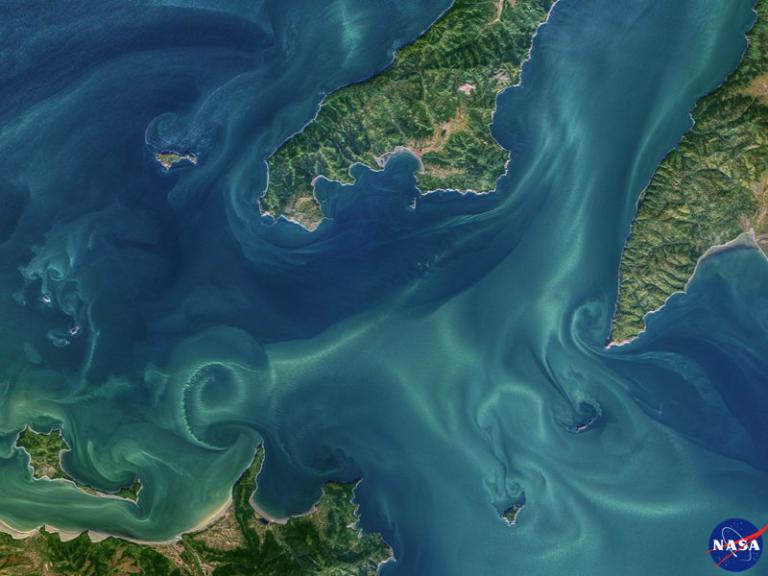
Lead supervisor: Ali Mashayek, Earth Sciences
Co-supervisor: John Taylor, DAMTP; Lois Baker, University of Edinburgh
Brief summary:
Ocean seafloor can help shape patterns of turbulence in the top layer of the ocean, responsible for the exchange of heat and carbon between the atmosphere and ocean.
Importance of the area of research concerned:
The top layer of the ocean is rich with dynamics on a wide range of scales, including eddies, currents, and waves. Such processes exist due to the air-sea exchange of momentum (e.g. winds), air-sea exchange of buoyancy (e.g. through precipitation, river runoff, freshwater input from ice melt), and Earth’s rotation. Surface turbulence is key for the ocean energy balance and for the exchange of heat and carbon between the atmosphere and ocean. There is accumulating evidence that the interaction of ocean currents with rough seafloor (topography) can generate waves that can propagate upward throughout the entire ocean depth and influence the dynamics at the surface. The nature of such influence is poorly understood and not represented in ocean and climate models.
Project summary :
This project aims to study the impact of topographically-generated upward propagating waves on the ocean surface turbulence. The project will involve two phases. In the first phase, the student will explore the global ocean for regions of potential interference of topographically generated dynamics with surface ocean turbulence. In the second phase, the student will identify one or two locations (potentially the Southern Ocean or the Gulf Stream) and design analytical and computational models that mimic the dynamics in the realistic setup but are sufficiently simple to allow for deeper fundamental understanding.
What will the student do?:
-Outputs from a high-resolution ocean model will be employed to identify the regions in the ocean where energetic topographic waves are expected to be generated and have the potential to propagate all the way to the surface. An example of such model may be found here: https://github.com/Mesharou/GIGATL
-Outputs from the same model, along with observations and data analysis tools will be employed to identify the zoo of surface processes (mesoscale and submesoscales)—e.g. see https://gmd.copernicus.org/preprints/gmd-2023-39/gmd-2023-39.pdf
-Regions of overlap (in scales) between topographic waves and surface processes will be identified. Direct satellite observations will be used to assist with this (e.g. see Marez et al. in references)
-One or two region(s) will be selected (e.g. the Southern Ocean or the Gulf Stream) and idealized theoretical/computational models of the surface mixed layer will be set up to mimic such regions. At the base of the models, upward propagating waves will be prescribed, mimicking the topographic forcing. The idealized models will be at higher resolutions to resolve the required turbulence scales
References - references should provide further reading about the project:
Taylor JR, Thompson AF. 2023, Annual Review of Fluid Mechanics, 55:103-27, https://doi.org/10.1146/annurev-fluid-031422-095147
de Marez, C., Lahaye, N. J., & Gula, J, 2020, Scientific Reports, 10(1), 2332. https://doi.org/10.1038/s41598-020-59297-5
Baker, L.E. and Mashayek, A., 2021, Journal of Fluid Mechanics, 924, p.A17, https://doi.org/10.1017/jfm.2021.627
Applying
You can find out about applying for this project on the Department of Earth Sciences page.